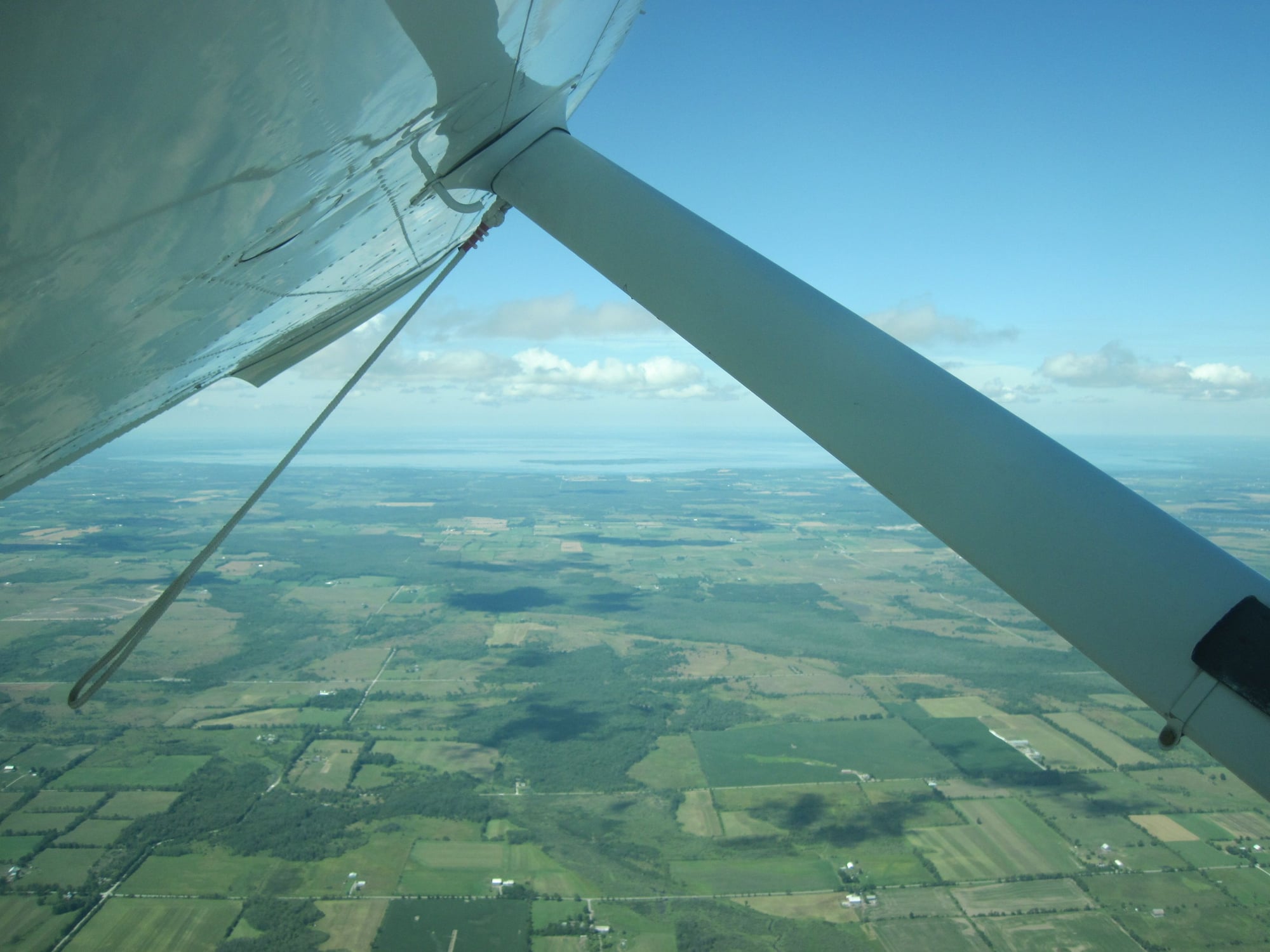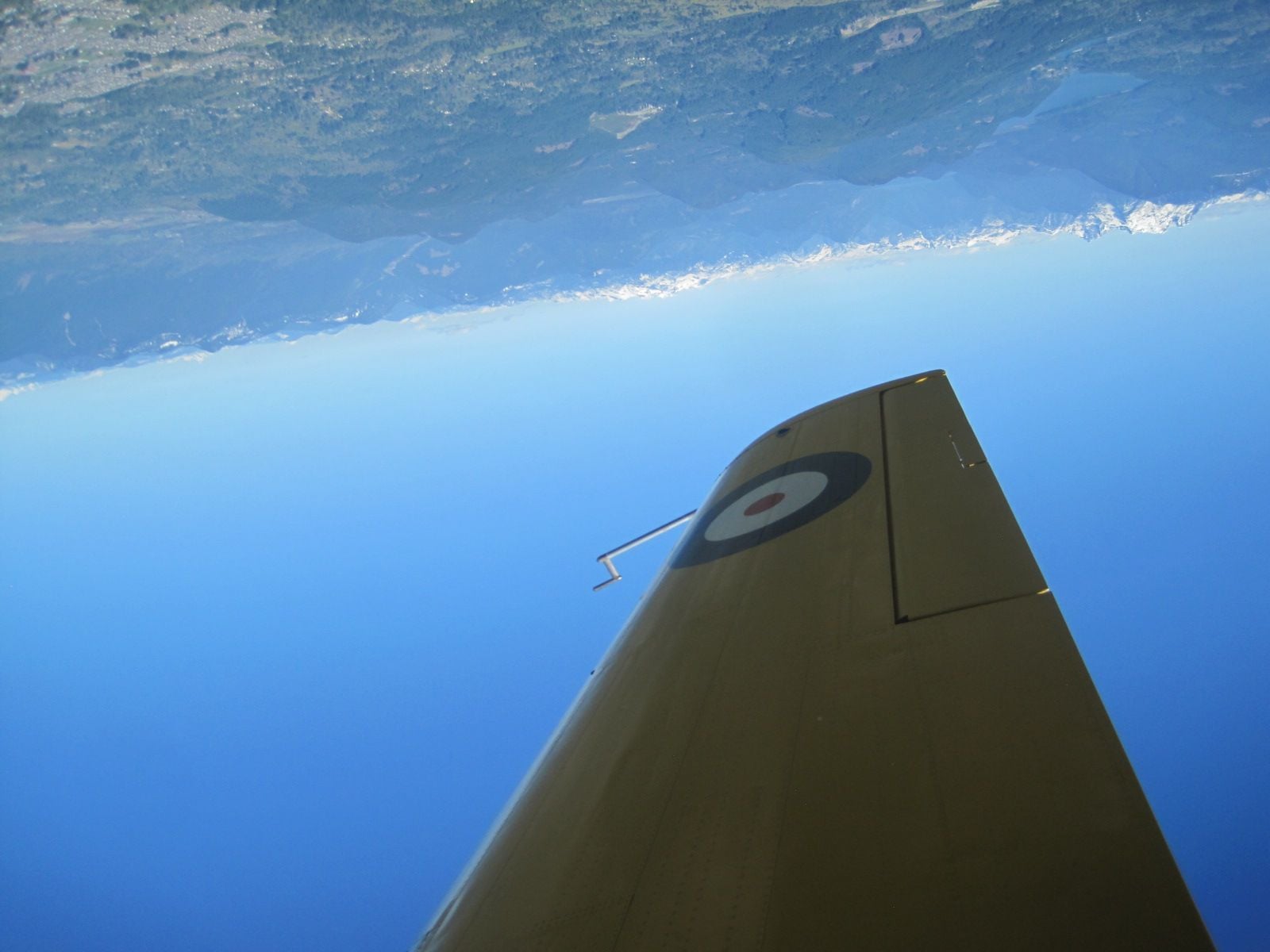as I cut throttle, dropped 20 degrees of flaps and increased prop pitch.
'Careful how you interpret this. Yes, "increase" prop pitch would mean to make it coarser. However, if you read the propeller control "increase" means move toward fine pitch, increase RPM. This is for slowing down quickly, and is somewhat abusive to the engine and prop - particularly geared engines! 'Same poor wording as "full" throttle. Fulling throttling something means cutting off the airflow. "Open" throttle, or "full power" convey properly. I'll say "full power", or "open the throttle", but I never say "full throttle". I'll also say "prop fine pitch" or "increase RPM". There is no flying condition where you'd reduce power, lower flaps, and coarse the prop pitch. If you've closed the throttle, the next thing you'll be doing is opening it again sometime, for which you'll want the prop fine pitch, so we plan ahead.
So, if we infer increased RPM - fine pitch - these are things a pilot would do to slow down quickly, hopefully with a liquid cooled engine they really didn't care too much about. Yes, if you want to change direction more quickly in a turn, reduce the airspeed.
Assuming the Angle of Attack (of about 6-7°)
If you're flying with that low AoA with any power, the propeller airflow path will hardly be changed from a normal cruise flight AoA. A a single propeller pilot flying a maximum performance rate turn will be flying a higher AoA, closer to a stall AoA - that's where the G comes from. In such case, the torque of the prop will have more effect on the handling of the plane than a change of airflow over or under the wing. This effect is increased right up to the stall, where the plane will roll with torque if the power is up. The tendency of one wing to stall before the other (and at least induce a roll, if not a spin) will be much more subject to uneven AoA of each wing, and imbalanced aerodynamic forces, than airflow over or under the wing. I'm not saying it's not a factor, it's just not a major factor.

You can judge the AoA I'm flying here. This is wings level, flaps up, level flight, full power just approaching the point of the stall. But, this is sustained, stable, one G flight. Now, if you were turning, you'd be pulling G, and would have stalled, so not this AoA. And, doubtful that WW2 fighters had the low speed airfoil that a Cessna 182 has, so could not achieve this AoA anyway.
The only plane I've flown that comes near being a WW2 fighter would be the Harvard.

Note that at the top of a loop, with lots of power, a bunch of AoA, and not a lot of airspeed, I have the ailerons wings level, 'not overcoming propeller airflow change effects.
If my premise is true, this line of inquiry has major historical significance
Okay... but I don't think the outcome of WW2 will be affected. Interesting thinking point, and perhaps a peripheral aerodynamic characteristic, but not very relevant to airplanes in use today.
the future conception of innumerable simulation games..
.
Okay, if you have a piloting game which models the forces affecting airplane handling so accurately that this factor could affect things, well done!